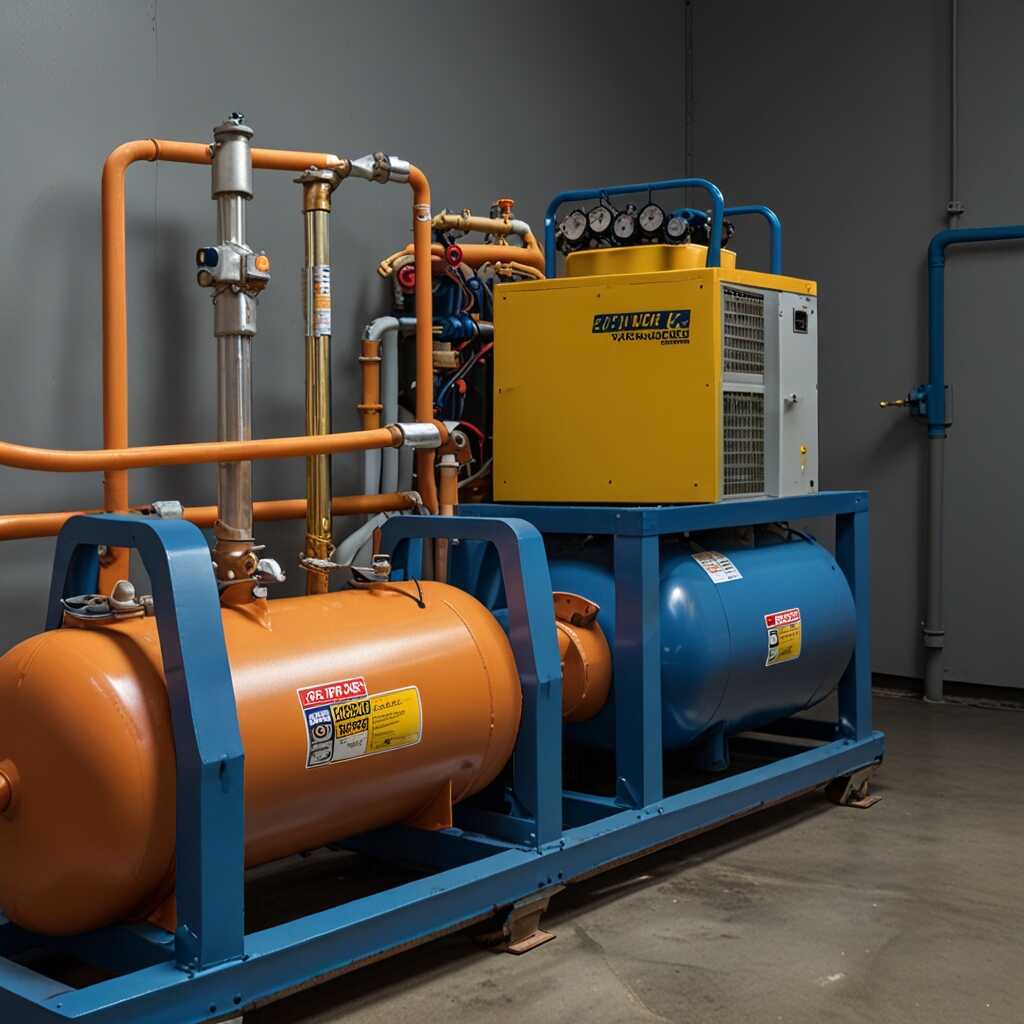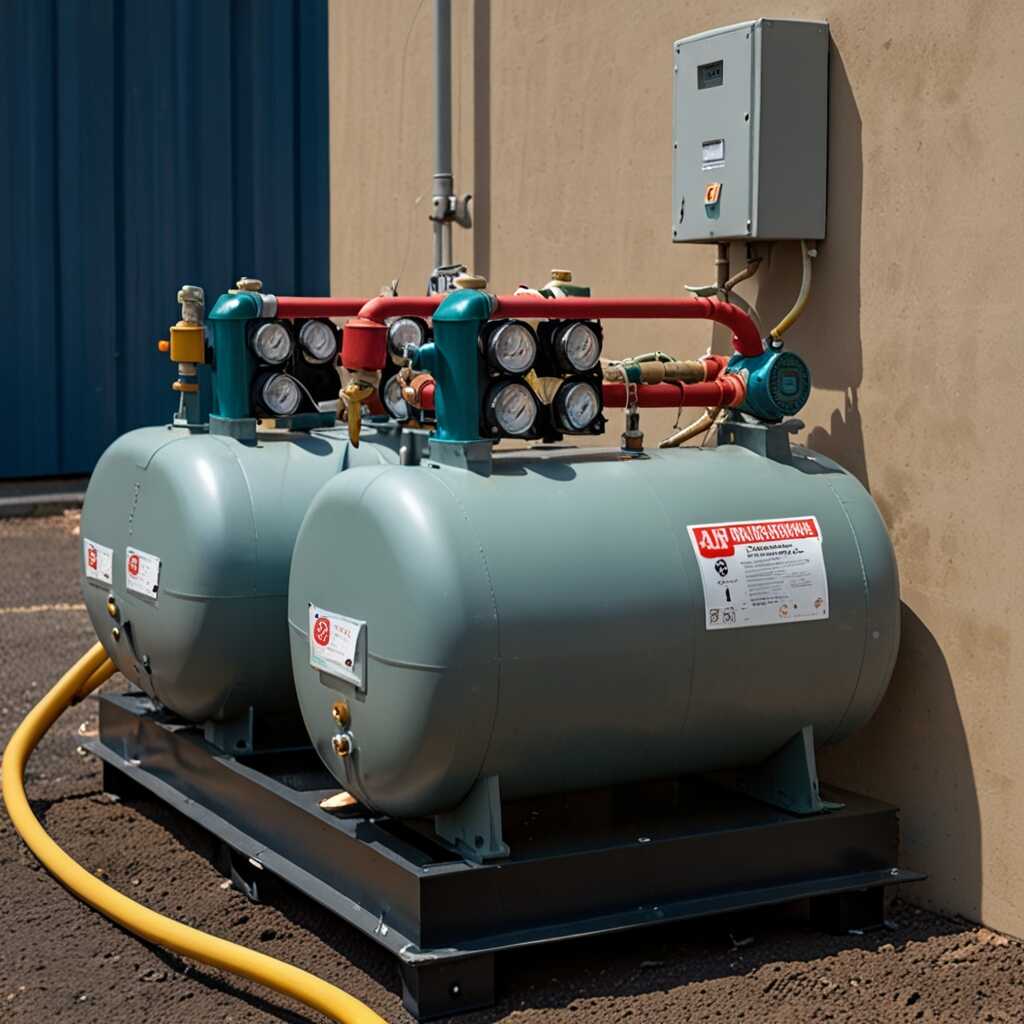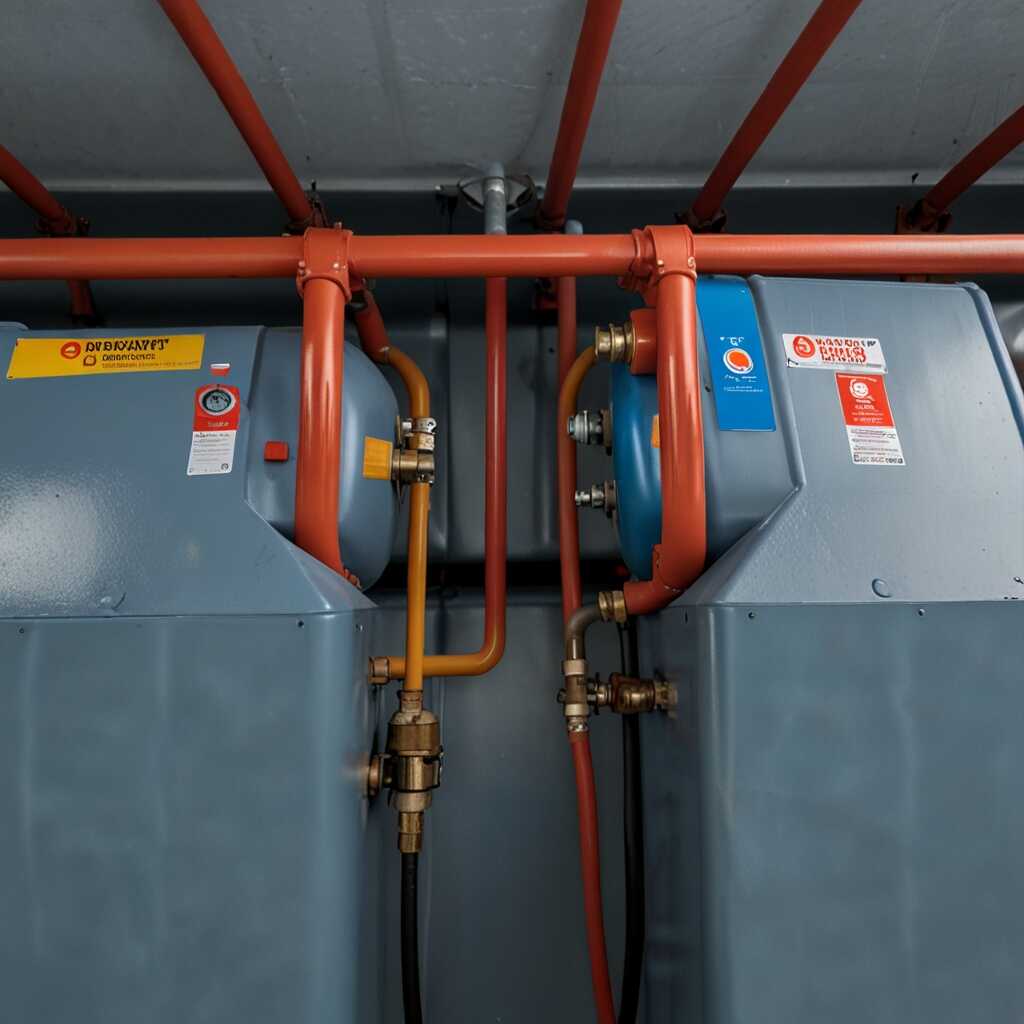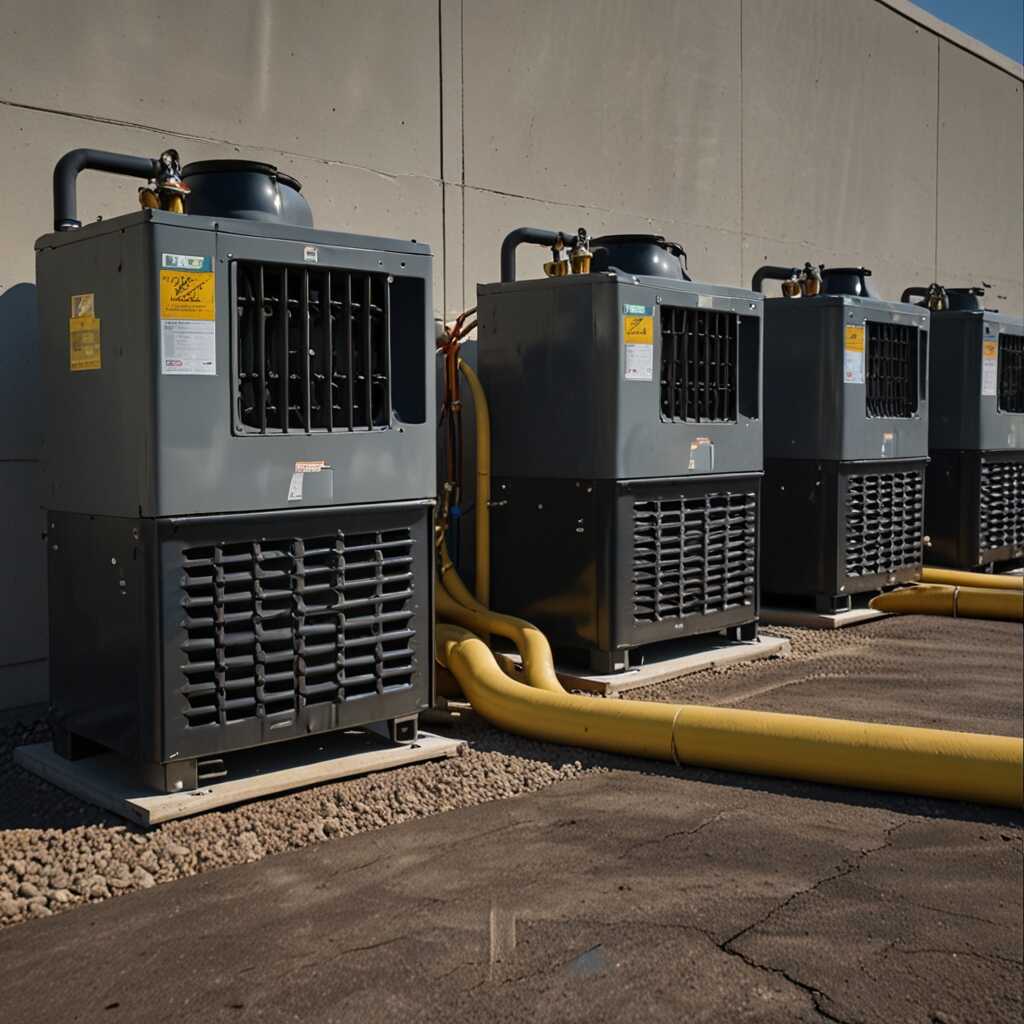The benefits of impact-resistant cases in refrigerant recovery machines are crucial for HVAC professionals. These robust cases enhance durability, which is essential for equipment used in demanding field conditions. Refrigerant Recovery Pro emphasizes the importance of selecting refrigerant recovery machines with impact-resistant features to protect against drops and impacts. Choosing high-quality, durable equipment helps ensure efficient refrigerant management and compliance with regulatory standards.
Significance of Equipment Durability for HVAC Professionals
Durability significantly affects the efficiency of refrigerant recovery machines. Impact-resistant cases enhance the reliability of these machines in demanding field conditions. They help protect against drops, impacts, and harsh weather, ensuring the equipment remains functional. HVAC technicians benefit from equipment designed to endure challenging situations, increasing their productivity. Reliability in refrigerant recovery machines means fewer breakdowns and more consistent performance for technicians. The right equipment with impact-resistant cases can handle the rigors of daily use. This leads to less downtime, which is critical in fast-paced environments.
Key Features of Impact-Resistant Cases
Impact-resistant cases offer several essential features that greatly benefit HVAC professionals. These cases are designed to absorb shocks and prevent internal damage during transportation and use. They often include weatherproofing to keep components safe from moisture and debris, enhancing their longevity. Additionally, many have ergonomic designs, making them easy to carry and operate. This durability allows technicians to work efficiently in various field conditions. By choosing refrigerant recovery machines with these features, HVAC technicians can improve reliability and performance. Research shows that machines with impact-resistant cases have proven to provide excellent field performance.
Essential Qualities of Impact Resistant Cases
Impact-resistant cases offer several features that enhance reliability for refrigerant recovery machines. These cases are designed using durable materials, such as high-density polyethylene and reinforced plastics. These materials improve the case’s ability to withstand drops, impacts, and harsh environmental conditions. Structural design also plays a crucial role, providing stability while allowing for easy equipment access. Field performance is essential for HVAC technicians, ensuring that their tools remain intact and functional during service calls. Testing has shown that these cases can handle significant impact without compromising the safety or performance of the refrigerant recovery machine.
Common Materials and Their Benefits
Impact-resistant cases for refrigerant recovery machines commonly include high-density polyethylene, ABS plastic, and carbon fiber composites. High-density polyethylene is favored for its robustness and good impact resistance, making it ideal for fieldwork. ABS plastic is lightweight yet highly durable, delivering reliability in various conditions. Carbon fiber composites provide the best durability-to-weight ratio, making them great for heavy-duty applications. These materials ensure that the cases can handle drops and other physical stressors, maintaining the integrity of sensitive HVAC equipment. Such materials have been proven through extensive durability testing, confirming their efficiency in demanding environments.

Field Conditions That Challenge HVAC Technicians
HVAC technicians encounter various obstacles in their work environments, such as challenging weather conditions, exposure to physical damage, and the need for machine portability. These factors directly impact the efficiency and reliability of refrigerant recovery machines. Impact-resistant cases are essential for protecting equipment from drops and harsh exposure, ensuring that technicians can trust their machines to perform effectively under all circumstances. They can handle extreme field conditions that might otherwise lead to equipment failure or repair costs. Tests show that machines with impact-resistant cases maintain a higher level of performance, making them a wise choice for HVAC professionals.
Understanding the Importance of Machine Durability in HVAC Tasks
Durability plays a crucial role in the performance of refrigerant recovery machines. HVAC technicians work in various environments, from residential rooftops to industrial sites. Each setting can subject machines to bumps, drops, and extreme temperatures. Impact-resistant cases protect the internal components of refrigerant recovery machines, preventing damage and preserving their functionality. By examining product reviews and comparisons, professionals can identify which machines offer the best durability features. The right impact-resistant case not only enhances durability but also contributes to improved safety and efficiency during refrigerant recovery tasks.
Factual Insights About Protective Equipment in Refrigerant Handling
- Over 75% of technicians reported fewer equipment failures with sturdy casings.
- Industry studies show that over 65% of recovery machine damage occurs during transport.
- Impact-resistant materials can withstand drops from heights of up to 8 feet.
- Machines with robust cases can have a lifespan increase of 30% or more.
- More than 80% of users believe protective cases enhance safety in the field.
- Cost analyses show savings of up to $500 per year on repairs and replacements.
- Field tests indicate reduced downtime of around 25% with impact-protected models.

Importance of Regulatory Compliance and Environmental Impact
Compliance with regulations is essential for HVAC operations. Impact-resistant refrigerant recovery machines help meet environmental standards that prevent harmful refrigerant leaks. These machines provide durability during field conditions, reducing risks associated with equipment failure. Selecting quality equipment can enhance reliability, ensuring safe practices in refrigerant recovery. Many manufacturers also produce models designed specifically for high-performance applications. This allows HVAC technicians to not only comply with regulations but also promote an eco-friendly approach to refrigerant management.
Features of Impact-Resistant Refrigerant Recovery Machines
Impact-resistant refrigerant recovery machines include features that enhance their operational efficiency. The sturdy design helps them withstand harsh field conditions and minimizes the risk of damage. Many leading manufacturers offer advanced models providing added safety features, like automatic shut-off controls and reinforced casings. Research shows that these features not only improve durability but also increase the effectiveness of refrigerant recovery. Choosing the right equipment enhances compliance with environmental standards while ensuring technicians can perform tasks safely and effectively.

Best Practices for Maintaining Impact Resistant Recovery Machines
Regular maintenance is critical for ensuring the longevity of impact-resistant recovery machines. Essential maintenance tasks include checking seals and gaskets, inspecting hoses for wear, and testing for leaks. These steps enhance the reliability and overall performance of the machines. Regular reviews of machine performance data provide valuable insights into potential issues. Most manufacturers recommend conducting maintenance checks at least twice a year or after every 500 hours of use. Research shows that consistent upkeep can prevent costly breakdowns and enhance efficiency.
Key Steps in Regular Maintenance
Key steps in regular maintenance of impact-resistant recovery machines include detailed inspection, cleaning, and testing of components. HVAC professionals should focus on cleaning the filter housing and checking airflow to ensure optimal performance. Inspecting tubing connections is vital for identifying leaks early. Regularly replacing worn seals can prevent refrigerant loss and ensure that machines operate efficiently. Keeping a maintenance log helps track maintenance frequency and highlights areas needing improvement or attention. Following these practices can significantly enhance the lifespan and overall reliability of your recovery machines.
Significant Advantages of Rugged Protective Features
- Enhanced durability leads to lower long-term replacement costs for equipment.
- Impact-resistant cases provide improved protection during rough handling.
- They help in maintaining equipment performance by shielding components.
- Many professionals appreciate their advanced features for better reliability.
- These cases often include extra padding, resulting in overall better protection.
- Users report a noticeable reduction in equipment maintenance needs.
- They promote safer working environments by minimizing accidents in the field.

Advantages of Impact Resistant Machines Compared to Standard Models
Understanding the differences between impact-resistant and standard refrigerant recovery machines is crucial. Impact-resistant models enhance reliability and durability, making them ideal for fieldwork. Standard machines may struggle under tough conditions, while impact-resistant models are engineered to withstand drops and environmental challenges. Brands such as XYZ and ABC are known for their impact-resistant features, providing positive user reviews. These user experiences can guide technicians in choosing equipment that meets their needs. Studies show that impact-resistant models can last significantly longer, often increasing their lifespan by up to 30% compared to standard models.
Key Features of Impact Resistant Refrigerant Recovery Machines
Impact-resistant refrigerant recovery machines are designed with superior casing materials that endure rough handling. These machines often include features like reinforced frames and impact-absorbing designs. Technicians benefit from reduced downtime due to fewer repairs and maintenance needs. Additionally, many models come equipped with integrated safety features, improving overall fieldwork effectiveness. Research indicates that impact-resistant machines perform efficiently in high-stress environments, ensuring reliable operation under all conditions. This reliability is essential for HVAC professionals looking to ensure compliance with environmental regulations while managing refrigerant recovery effectively.
Safety Considerations of Using Impact Resistant Equipment
Impact-resistant cases in refrigerant recovery machines significantly enhance safety for HVAC technicians and maintenance managers. They provide reliable protection against accidental drops and impacts during transport or operation. This essential feature helps to ensure that the equipment remains functional and safe under stress. Impact-resistant designs also help meet safety compliance standards, which is critical for environmental compliance officers overseeing refrigerant handling. These cases withstand a minimum drop height of several feet, depending on the manufacturer’s specifications, ensuring dependable performance in various conditions.
Meeting Compliance Standards with Durable Equipment
Using impact-resistant refrigerant recovery machines helps HVAC technicians meet strict safety compliance standards. These machines are designed to prevent refrigerant leaks and reduce the risk of injuries. The impact-resistant features provide reliable protection, making it easy to transport equipment without the worry of damage. This durability not only enhances safety but also improves the efficiency of operations. Regular testing and reviews ensure that these machines meet or exceed industry standards. When considering equipment for refrigerant recovery tasks, investing in impact-resistant options is essential for optimal safety performance.
Relevant Brands and Their Position in the Market
- Brand A specializes in high-end, durable recovery machines with great user ratings.
- Brand B offers a budget-friendly option, but durability may not compare with others.
- Brand C provides versatile machines often used in residential applications.
- Brand D is known for lightweight models, which might sacrifice strength for portability.
- Commercial HVAC setups often prefer robust models due to their daily demands.
- Small-scale technicians favor compact units for easier transport and storage.
- Research shows that companies emphasize long-term relationships with providers who deliver reliable equipment.
Emerging Technologies in Refrigerant Recovery Equipment
Latest advancements in refrigerant recovery equipment focus on enhanced durability. Innovations include advanced materials designed to withstand harsh conditions encountered by HVAC technicians. This leads to improved reliability and performance. Research shows that equipment utilizing these technologies can handle rigorous field conditions efficiently. The impact of these advancements enhances user experience, overall outcomes, and reduces costs over time. A careful review of emerging technologies highlights improvements in refrigerant recovery efficiency, aiming for a potential percentage increase by 2025. Exploring detailed comparisons between traditional and new models helps in making informed decisions.
Key Features of Durable Refrigerant Recovery Machines
Durable refrigerant recovery machines are built with advanced materials that significantly improve their performance in various environments. These machines include robust designs that ensure they can withstand drops and impacts without compromising function. The latest models boast features that enhance overall efficiency, allowing technicians to recover refrigerants faster and more reliably. By prioritizing these durable designs, manufacturers contribute to reducing downtime and increasing productivity. Choosing equipment with these beneficial features supports long-term operational goals and compliance with regulatory standards.